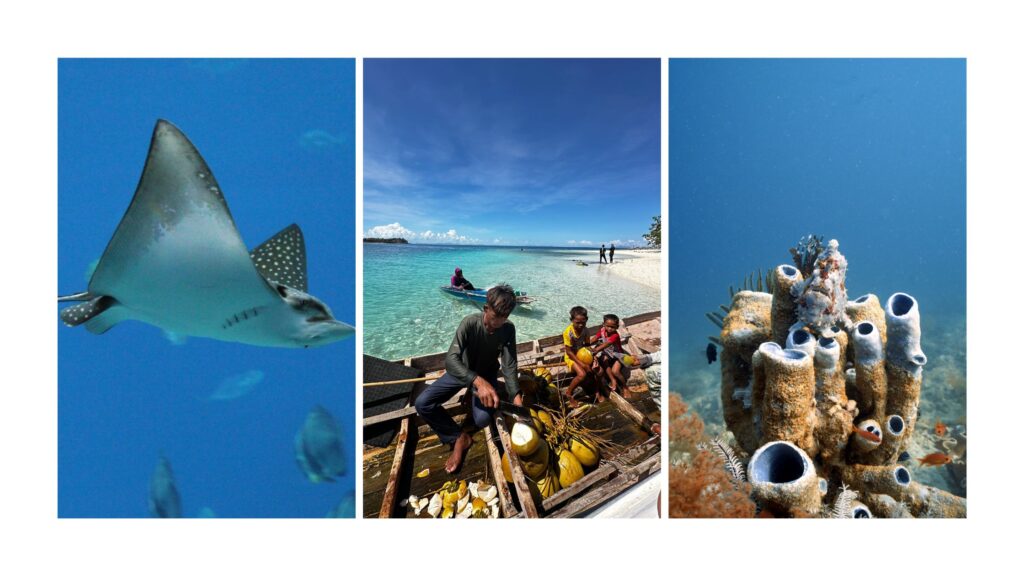

Nestled in the Celebes Sea off the east coast of Sabah, Malaysian Borneo, Sipadan Island stands as a testament to nature's extraordinary beauty. This small oceanic island, barely 12 hectares in size, has captivated the hearts of divers and marine enthusiasts worldwide. Sipadan Island closure for a month each November has become an annual event, aimed at preserving its unique ecosystem. But before we delve into the reasons behind this closure, let's explore what makes Sipadan so special.
The legendary Jacques Cousteau, a pioneer in marine exploration, stumbled upon Sipadan in 1988. Awestruck by its pristine beauty, he famously declared, "I have seen other places like Sipadan, 45 years ago, but now no more. Now we have found an untouched piece of art." This endorsement from one of the most respected names in oceanography catapulted Sipadan into the spotlight, making it a must-visit destination for divers around the globe.
What sets Sipadan apart is its distinctive underwater landscape. The island is actually the tip of an extinct volcanic cone that rises dramatically from the ocean floor. This unique topography creates a mesmerizing underwater environment, with sheer drop-offs plunging to depths of over 600 meters. These walls are adorned with vibrant coral gardens, providing a perfect habitat for an incredible diversity of marine life.
Sipadan's isolation and protection have allowed it to maintain an incredibly rich and diverse ecosystem. The island is renowned for its high concentration of sea turtles, with both green and hawksbill turtles frequently spotted. Large schools of barracuda and jackfish create swirling tornados of silver in the blue waters, while hammerhead and whale sharks make occasional appearances in the deeper waters.
The reef systems surrounding Sipadan are home to over 3,000 species of fish and hundreds of coral species. Divers can expect to encounter an array of exotic creatures, from the delicate mandarin fish to the peculiar ghost pipefish. The island's waters also host a significant population of bumphead parrotfish, which play a crucial role in maintaining the health of the coral reefs.
As one of the world's premier diving destinations, Sipadan is subject to strict regulations to ensure its preservation. These measures are crucial in maintaining the delicate balance of this underwater paradise.
Since 2009, Sipadan has been designated as a protected marine park, under the supervision of Sabah Parks. This status has been instrumental in safeguarding the island's ecosystem from the potential negative impacts of over-tourism and unsustainable practices.
To prevent overcrowding and minimize environmental impact, Sabah Parks has implemented a permit system that allows only 200 divers per day to visit Sipadan. Each permit grants a diver access to the island for one day, with a maximum of two dives allowed during that visit. This limitation ensures that the marine environment is not overwhelmed by constant human presence.
For those lucky enough to secure a permit, there are additional requirements to be aware of:
These regulations might seem strict, but they play a crucial role in preserving Sipadan's unique ecosystem for future generations to enjoy.
Every November, Sipadan Island closes its waters to divers and visitors. This annual closure is a critical conservation measure that has far-reaching benefits for the island's marine ecosystem.
The primary goal of this Sipadan Island closure for month-long hiatus is to support the health and recovery of the island's ecosystem and marine life. By reducing human disturbances, particularly those caused by scuba divers, the closure provides a much-needed respite for the underwater inhabitants of Sipadan.
During this period, the marine life can go about their daily activities without the presence of divers. This break allows for undisturbed breeding, feeding, and natural behaviors that are essential for maintaining a healthy ecosystem. Moreover, the absence of divers gives the coral reefs a chance to recover from any inadvertent damage caused by fins, hands, or equipment throughout the year.
The effectiveness of this Sipadan island closure was particularly evident in 2021 when Sabah Parks reported on the impacts of an extended 18-month closure due to the global pandemic. The results were astounding: significant coral growth was observed, and rarely found fish species were spotted in the area. This extended period of minimal human interference demonstrated the resilience of nature when given the chance to recover.
The annual November closure, while shorter, aims to provide similar benefits on a regular basis. It's a testament to the commitment of local authorities and the diving community to preserve this underwater wonder for future generations.
One of the remarkable aspects of Sipadan is its consistency throughout the year. Unlike many dive destinations that have distinct seasons for marine life or weather conditions, Sipadan offers relatively stable conditions year-round.
The marine life in Sipadan is largely resident, meaning that the spectacular biodiversity divers come to see can be observed throughout the year. From the majestic sea turtles to the swirling schools of barracuda, these creatures call Sipadan home year-round.
While Sipadan is a year-round destination, some months offer slightly more favorable conditions. The best months to visit are typically from February to June and from September to December. During these periods, the sea conditions are generally calmer, offering better visibility and more comfortable diving experiences.
January, July, and August can be a bit more challenging due to increased wind, which can make the boat journey from Mabul to Sipadan more adventurous. However, it's worth noting that even during these months, dive trips are rarely cancelled. The persistent winds might stir up the surface waters, but the underwater visibility often remains excellent, especially at depth.
While the Sipadan island closure in November might initially disappoint some divers, it presents an excellent opportunity to explore other nearby dive sites that are often overshadowed by Sipadan's fame. One such gem is Si Amil Island.
In response to the Sipadan island closure, Scuba Junkie, have begun exploring Si Amil Island. This lesser-known destination has proven to be a fantastic alternative, offering its own unique underwater experiences.
Si Amil is known for its population of devil rays and eagle rays, providing exciting encounters for divers. Additionally, the island boasts an impressive array of macro life, making it a paradise for underwater photographers who enjoy capturing the smaller, often overlooked creatures of the sea.
Picture this: The sun peeks over the horizon as you board the boat at Mabul, the salty breeze tousling your hair. As you cruise towards Si Amil, anticipation builds, your mind racing with thoughts of the underwater wonders awaiting you.
Upon reaching Si Amil, you waste no time slipping into the crystal-clear waters. The first dive is a feast for the senses - vibrant corals, curious fish darting about, and if you're lucky, the graceful glide of a passing ray. Surfacing with a grin, you swap stories with fellow divers over a hearty second breakfast, the taste of adventure still fresh on your lips.
Before you know it, you're back in the water for round two. This time, you focus on the little things - a tiny nudibranch here, a camouflaged frogfish there. The underwater world seems to unveil new secrets with each passing minute.
Lunchtime brings a welcome respite on the island's pristine beach. As you dig into your meal, keep an eye out for the local residents - not other divers, but the cheeky monkeys that call Si Amil home. Their playful antics provide the perfect surface interval entertainment.
As the day winds down, you gear up for one last plunge. The afternoon sun casts ethereal rays through the water, illuminating schools of fish and coral gardens. It's a fitting finale to an unforgettable day of diving.
With three incredible dives under your belt and a head full of memories, you board the boat back to Mabul. As Si Amil fades into the distance, you can't help but feel a sense of wonder at the hidden gem you've just explored.
What sets Si Amil apart is not just its underwater attractions but also its pristine beaches. Unlike the more developed Mabul, Si Amil offers a true tropical island experience with its turquoise waters and white sand beaches. The presence of playful monkeys adds an extra element of excitement to the surface intervals.
For those looking for even more variety, daily trips to Mabul and Kapalai continue to operate during Sipadan's closure. These sites offer their own unique diving experiences, from vibrant artificial reefs to muck diving paradises teeming with bizarre and beautiful critters.
As we wrap up our dive into the annual Sipadan Island closure, let's surface with some thought-provoking questions. Grab a virtual cup of coffee and let's chat about the future of this underwater paradise.
First off, what's your take on closing the island for a month each year? On one hand, it's a bold move towards sustainable tourism, giving the marine life a much-needed breather from our bubble-blowing presence. But on the flip side, it's not a simple decision. There's a delicate balance between preserving nature and supporting the local economy that relies on dive tourism. Do you think this annual timeout strikes the right balance, or should we be exploring other approaches?
Speaking of approaches, let's dream big for a moment. If you were in charge of Sabah Parks for a day, what would be on your conservation wishlist? Maybe you'd push for stricter enforcement of diving regulations? Or perhaps you'd love to see more extensive research programs to really understand what's happening beneath the waves? How about ramping up education initiatives for both locals and tourists? The possibilities are as vast as the ocean itself. What ideas do you have that could take Sipadan's protection to the next level?
Now, here's a question that really makes you dive deep: Does this month-long closure actually make a splash in terms of conservation? We saw some pretty amazing results during the extended closure in 2021, with coral growth and rare fish sightings. But when it comes to the annual one-month break, the effects might be more subtle. How do you think we could measure the impact? Are there creative ways we could quantify the benefits to really understand if this approach is working?
These aren't just rhetorical questions – we really want to hear your thoughts! As fellow ocean enthusiasts, your insights and ideas could spark the next great conservation initiative. So don't be shy – dive into the comments and let's keep this important conversation flowing. After all, it's going to take all of us working together to ensure that future generations can experience the magic of Sipadan just as we do today.
Remember, every comment, every idea, and every action, no matter how small, can create ripples of change. So, what are your thoughts on preserving paradise?

